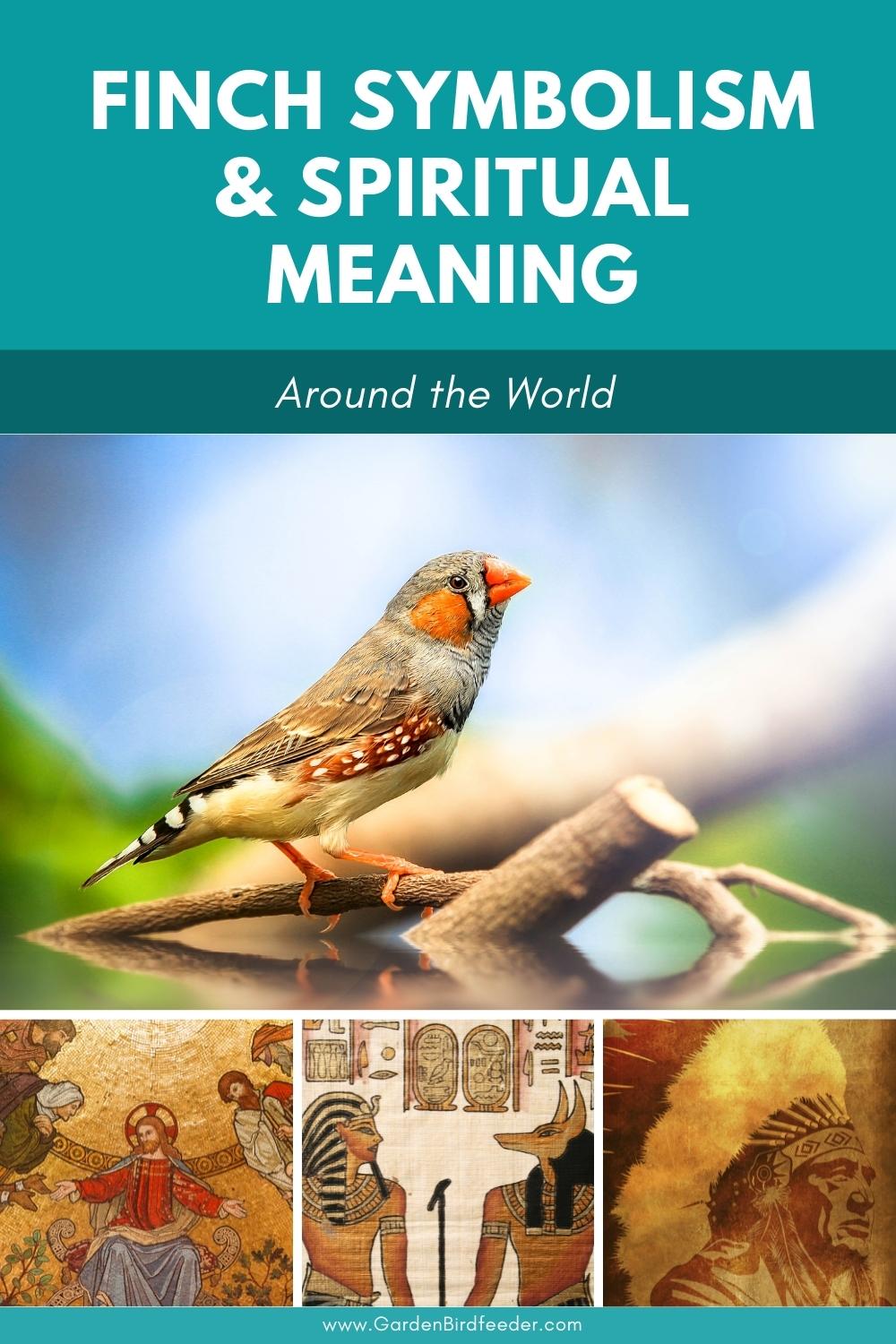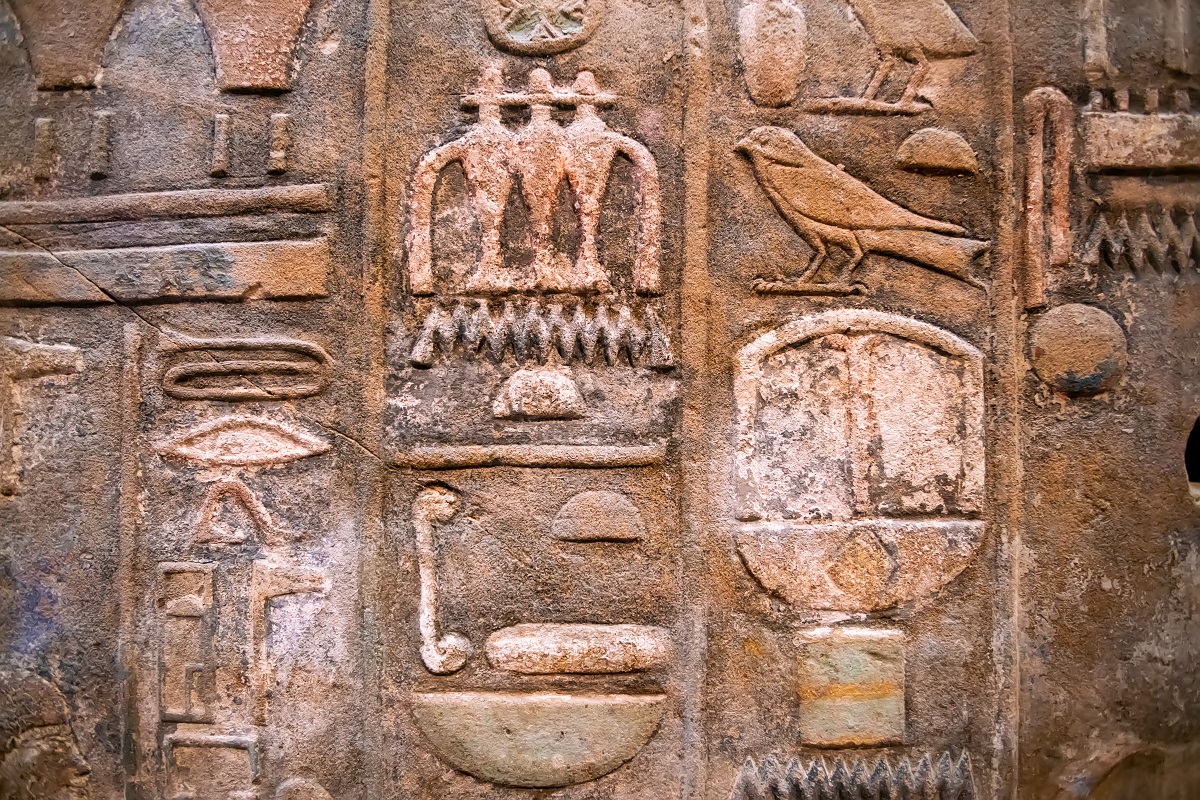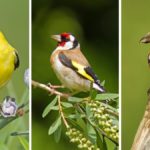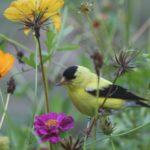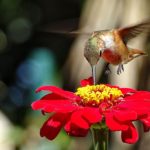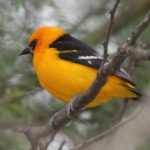The cheerful finch, like many other songbirds, has served as a symbol in religions and cultures around the world. From paintings to poetry, folklore, and mythology, the humble finch symbolizes good luck, joy, and wisdom.
Let’s take a closer look at finch symbolism and what this cheerful bird represents.
Finch Spiritual Meaning
Finches have been referenced in religious literature, holy books, and paintings across the globe.
In Christianity
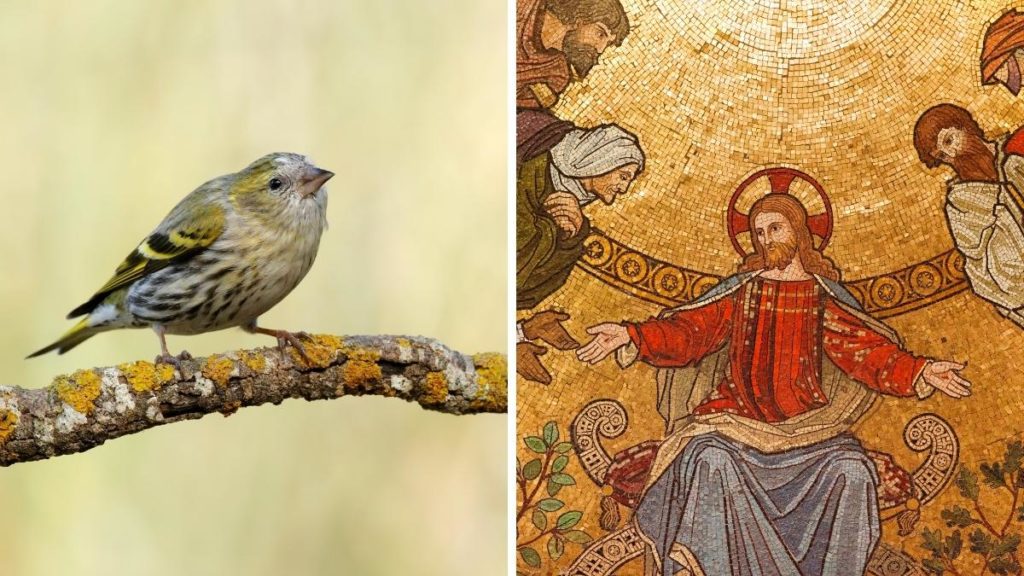
Christian teachings and art often reference finches, especially the goldfinch. Finches are associated with the Passion of the Christ and are often depicted in Christian paintings.
Artist Luca di Tommè’s famous altarpiece depicted Christ holding a goldfinch in his left hand. Some say that in this piece, the finch represents the Resurrection of Christ. Others believe the finch serves as a reminder that the fate of your soul is in God’s hands.
Finch bible references symbolize the goldfinch as the passion of Christ. One Christian tale explains how goldfinches get the red coloring on their heads. It is believed that the goldfinch attempted to remove a thorn from Christ’s crown, and his head became stained with blood.
Raphael’s Madonna of the Goldfinch, from 1506, depicts a goldfinch in the hands of Saint John. The goldfinch is believed to foreshadow the Passion of Christ.
In Native American Culture
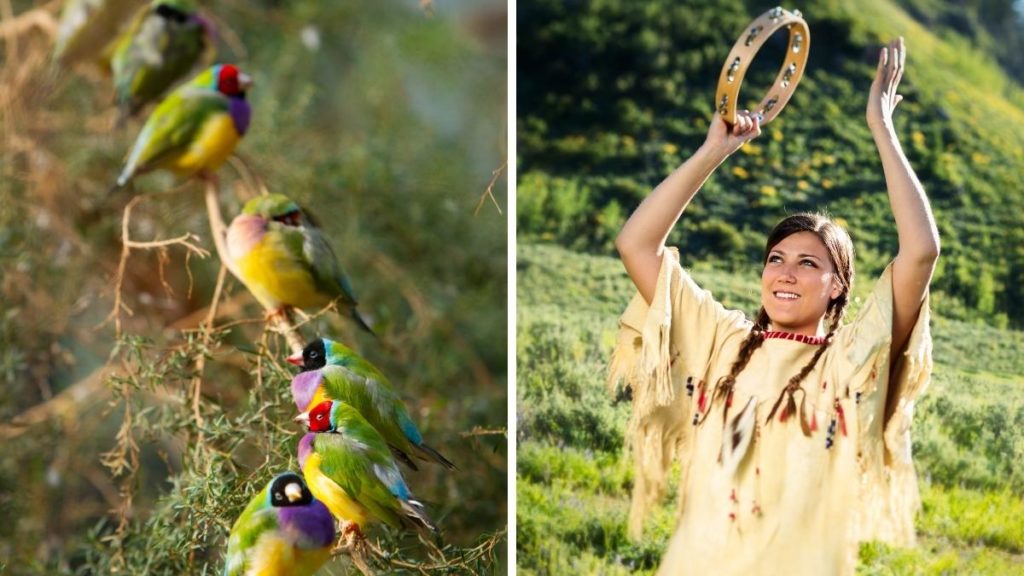
Like many other cultures, Native Americans viewed finches as a symbol of joy. Their behaviors, colors, and beautiful songs made them an ideal representation of happiness.
In Ancient Egypt
Ancient Egyptians believed finches were spiritual guides sent to help them navigate life. They viewed finches as good omens, symbolizing luck and joy. They also viewed these birds as symbols of family bonds.
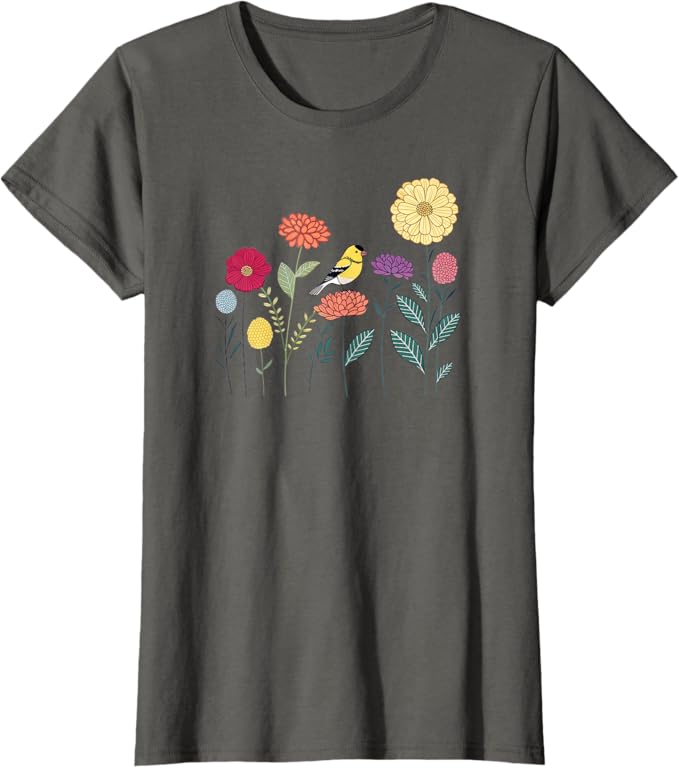
Love the birds that visit our gardens? Check out this Cute Goldfinch in Colorful Zinnia Flower Garden T-Shirt.
Get yours today, just in time for Spring! Available from Garden Bird Lover Tees at Amazon.com.
Finch Cultural Symbolism
Throughout history, finches have served as cultural symbols for a variety of concepts and ideas.
A Protector Against Disease
The goldfinch was often viewed as a protector against plagues. It had long been believed that the Charadrius – a mythical bird – could take on any disease if it were looked in the eye. In art, the Charadrius was often depicted as a goldfinch.
A Symbol of Freedom
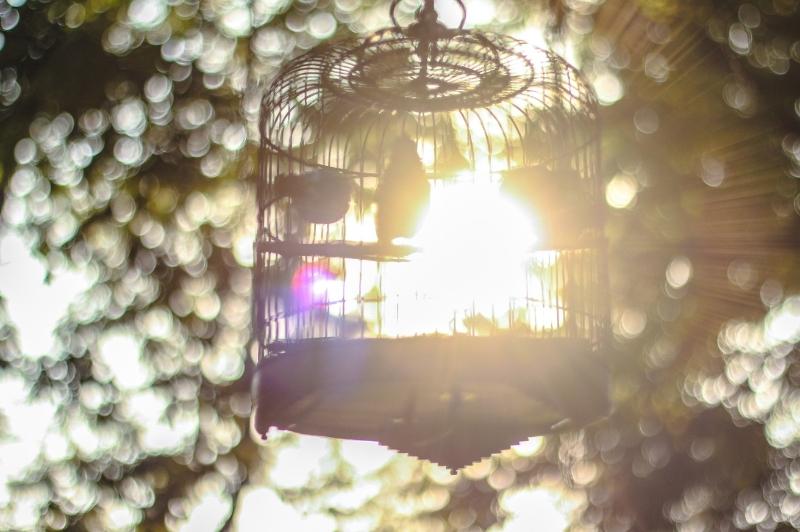
Finches have long been kept as pets in cages. Over time, these caged songbirds, with their beautiful voices, became symbols of repressed freedom and symbols of liberty.
Folklore
In Irish folklore, goldfinches are said to be found wherever fairies make their homes. Goldfinches have also been associated with mischievous goblins, but they’ve more often been viewed as birds with curative properties due to the male’s yellow coloring.
In Chinese folklore, finches are symbols of good fortune. Why? Because these birds are small and agile, they can easily escape entrapments.
Seeing Finches in Dreams
What does it mean to see a finch in your dreams?
If you see a finch flying high in the sky, it may mean you’re in a happy relationship or will soon meet someone special.
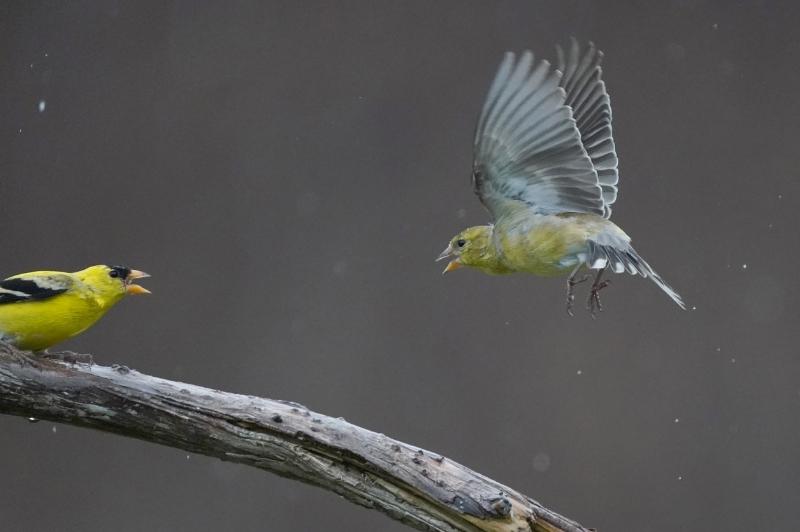
Finches can also represent communication and harmony. It may also be associated with your home and represent a contented life with friends and family.
To dream of nesting finches may mean that you are safe and protected, but to beware of toxic people.
Finches as Spirit Animals
If the finch is your spirit animal, you’re likely a sensitive, compassionate, and creative person. You’re also adaptable and influenced by your environment. You exude joy and positivity when surrounded by the right people and in the right environment.
Other Finch Symbolism
Some finches are also symbols and serve as state birds in the U.S.
Purple Finch Symbolism
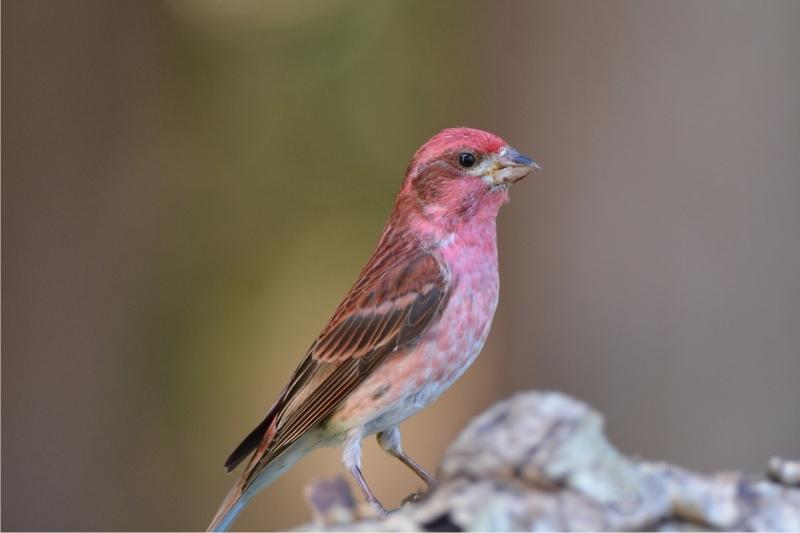
The purple finch is the state bird of New Hampshire. Like other types of finches, they represent joy and positivity.
Yellow Finch Symbolism
The yellow finch symbolizes joy, persistence, freedom, and enthusiasm. It is also the symbol of several states.
- The Eastern Goldfinch is the official state bird of New Jersey.
- The American Goldfinch is the official state bird of Iowa.
Final Thoughts
Throughout history, finches have almost always been associated with freedom and joy. Although some cultures may have viewed them as mischievous little creatures, they’ve more often been viewed as good omens.
With their cheerful songs and colorful appearance, these delightful creatures make you smile and feel joy when you see them in nature.
Like It? Pin It!
